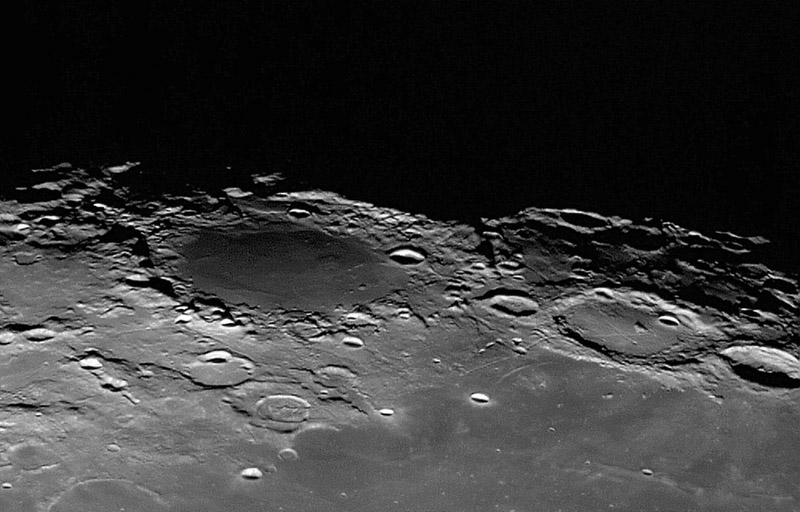Difference between revisions of "November 12, 2013"
| Line 14: | Line 14: | ||
<br /> | <br /> | ||
<strong>Related Links</strong><br /> | <strong>Related Links</strong><br /> | ||
| − | <em>[ | + | <em>[[21st Century Atlas of the Moon|21st Century Atlas]]</em> chart 26.<br /> |
Ricardo's [http://www.vaztolentino.com.br website]<br /> | Ricardo's [http://www.vaztolentino.com.br website]<br /> | ||
<br /> | <br /> | ||
Latest revision as of 07:34, 28 October 2018
11/12/13

image by Prof. Ricardo Jose Vaz Tolentino, Brazil
The current system of lunar nomenclature descended from the work of the Jesuit priest and astronomer Giovanni Battista Riccioli (1598 - 1671), who in 1651, set names for the formations covered in a lunar map drawn by his pupil Francesco Maria Grimaldi. The large crater Grimaldi, with its 230 km wide floor flooded by dark lava, is actually the inner ring of a large impact basin with two rings, known as the Grimaldi Basin, whose outer ring, about 430 km in diameter, is greatly degraded. The basin is relatively old (about 4 billion years) and its degradation was accelerated by the impact ejecta from the creation of the Mare orientale basin (Wood, 2003). The internal floor, which is its most notable feature, has a low albedo, flat and relatively smooth, with some formations of volcanic origin (domes). This dark floor (perhaps the darkest of all large craters or basins) stands out from much of the surrounding outer surface, which is quite bright (high albedo), which facilitates its location, being on the western edge lunar reference, on southwest of Oceanus Procellarum.
Prof. Ricardo Jose Vaz Tolentino
Technical Details
June, 03, 2012; 01:41:14 LT (04:41:14 UT). Sky-Watcher Collapsible Truss-Tube DOB + Orion StarShoot Solar System Color Imager III Camera + Celestron Ultima 2X Barlow - Just one frame.
Related Links
21st Century Atlas chart 26.
Ricardo's website
Yesterday's LPOD: Moon Crash
Tomorrow's LPOD: Rearranging Impact Melt
COMMENTS?
Register, Log in, and join in the comments.



